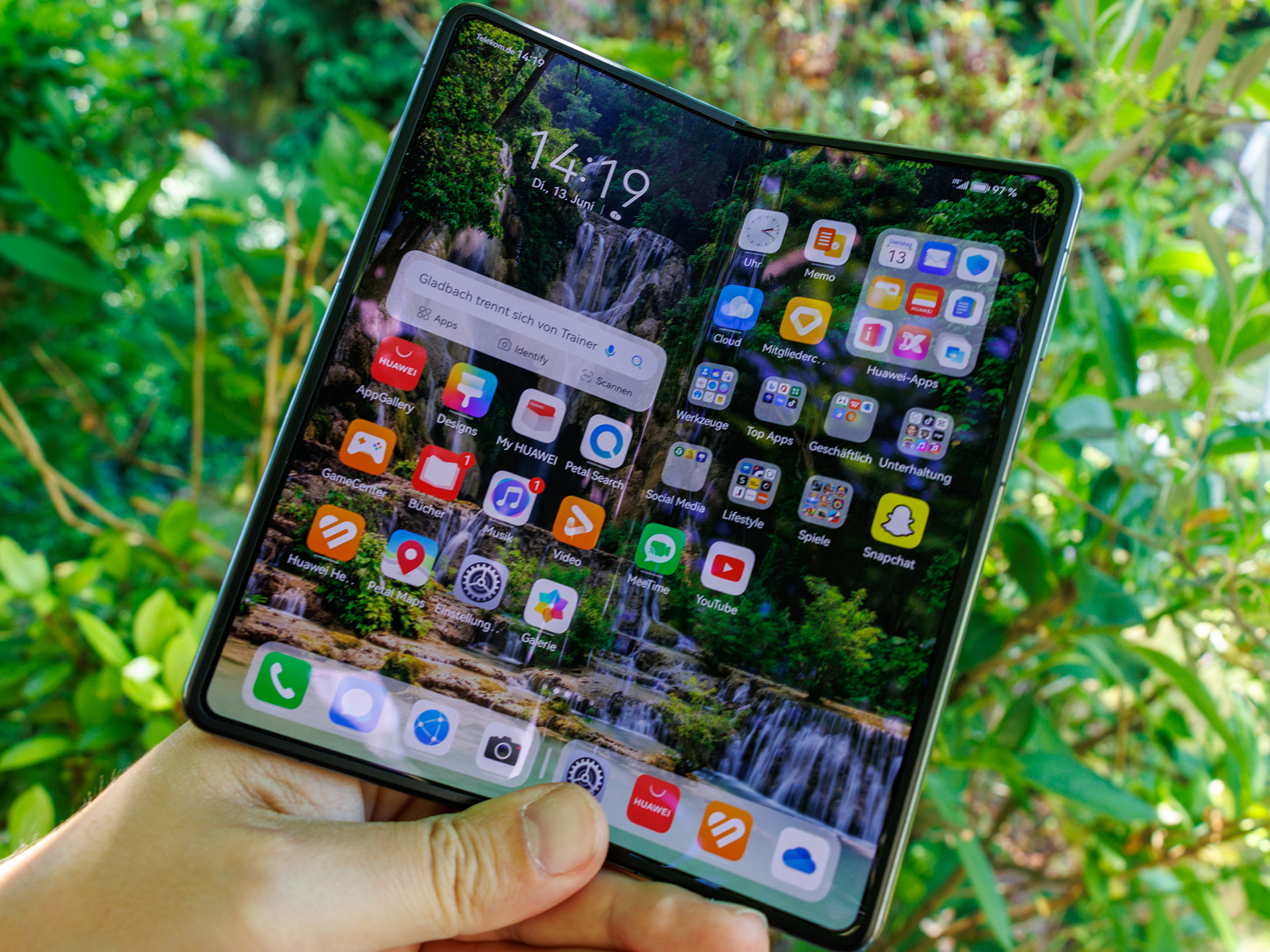
The main display of the Huawei Mate X3 is now on the inside and grows minimally to 7.85 inches. It supports the HDR standards HLG, HDR10, and HDR10+. The refresh rate of the LTPO OLED panel reaches up to 120 Hz, the system dynamically adjusts this between 1 and 120 Hz, alternatively, it is possible to fix the refresh rate to 60 or 120 Hz.
The brightness has been improved compared to the Mate Xs 2 and now reaches an average of 969 cd/m2 when the ambient light sensor is active. This value remains on the same level even with an even distribution of bright and dark areas (APL18), and the brightness is not increased further even in HDR rendering. Those who prefer to adjust the brightness manually have 476 cd/m2 at their disposal.
The smaller cover display on the outside also relies on OLED technology, but it can get even brighter. While the brightness is almost identical in manual mode (max. 479 cd/m2), the smaller panel can increase a bit in the APL18 test and reaches up to 1,239 cd/m2.
OLED flickering is very similar in both displays. We measured a fairly constant 90 Hz depending on the zoom level, which could be a burn-in protection or black frame insertion. Zooming in closer, we can measure a frequency between 425 and 549 Hz at minimum display brightness. The Mate X3 uses PWM dimming with 1,440 Hz for both displays, which is considered comparatively easy on the eyes.
Source link
 notebook.co.id informasi dan review notebook laptop tablet dan pc
notebook.co.id informasi dan review notebook laptop tablet dan pc